For a certain TI component, I'm choosing between these two packages, both of which are 24-pad and 0.5mm pitch:
- QFN: http://www.ti.com/lit/ml/mpqf167b/mpqf167b.pdf (4 x 4 mm)
- BGA: http://www.ti.com/lit/ml/mpbg520/mpbg520.pdf (3 x 3 mm)
Some considerations:
- BGA is cheaper for a PCBA house to assemble, correct?
- If I use 3 mil microvias (on a 6-8 layer board) to route out BGA components, how many rows/cols does a 0.5mm BGA have to be before the routing gets annoying?
Any advice appreciated!
